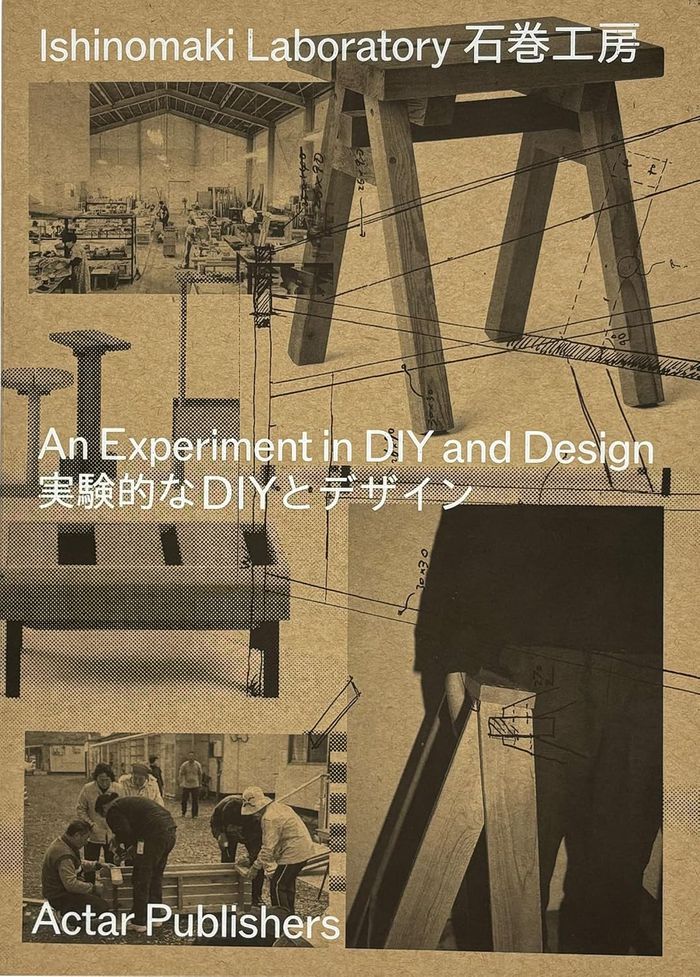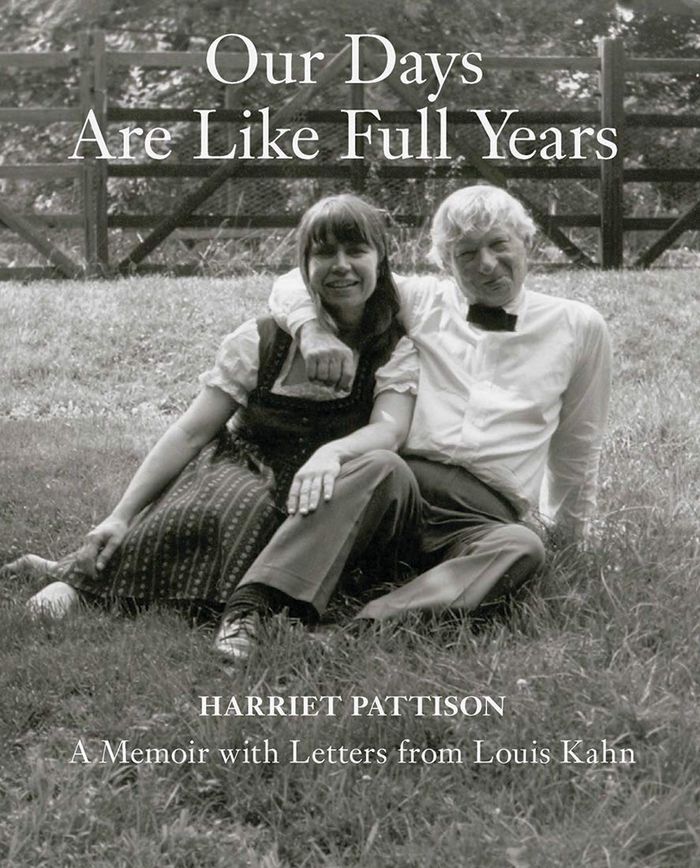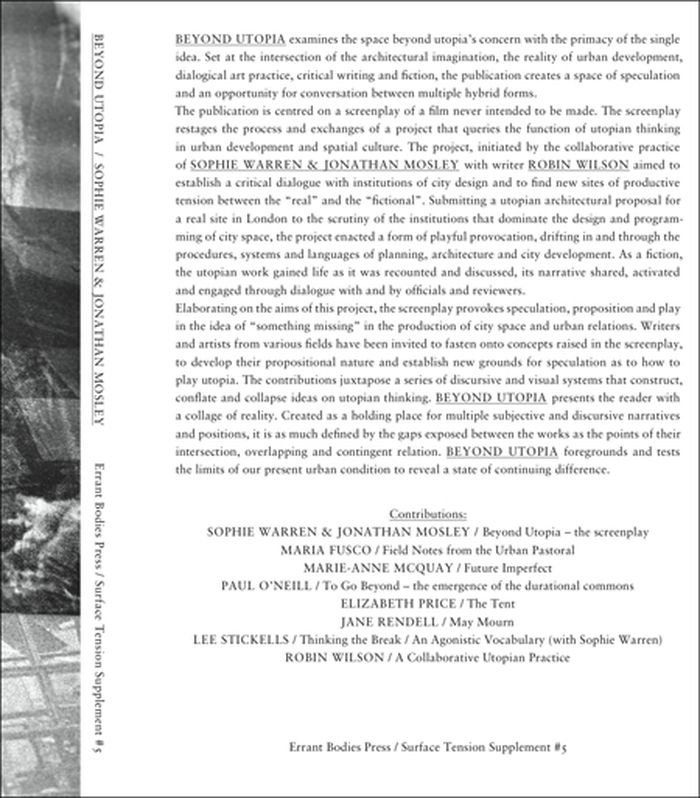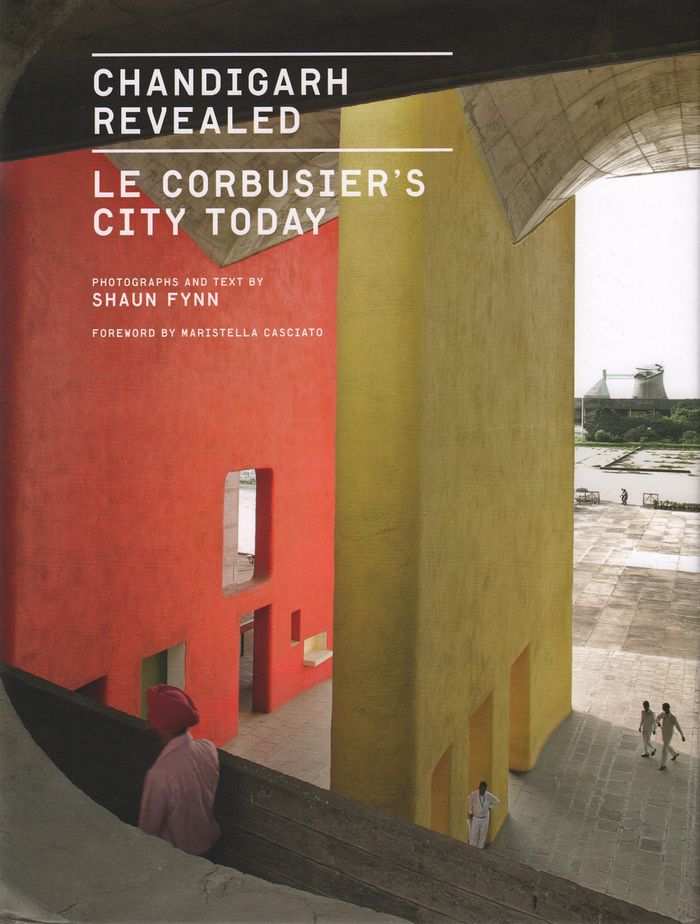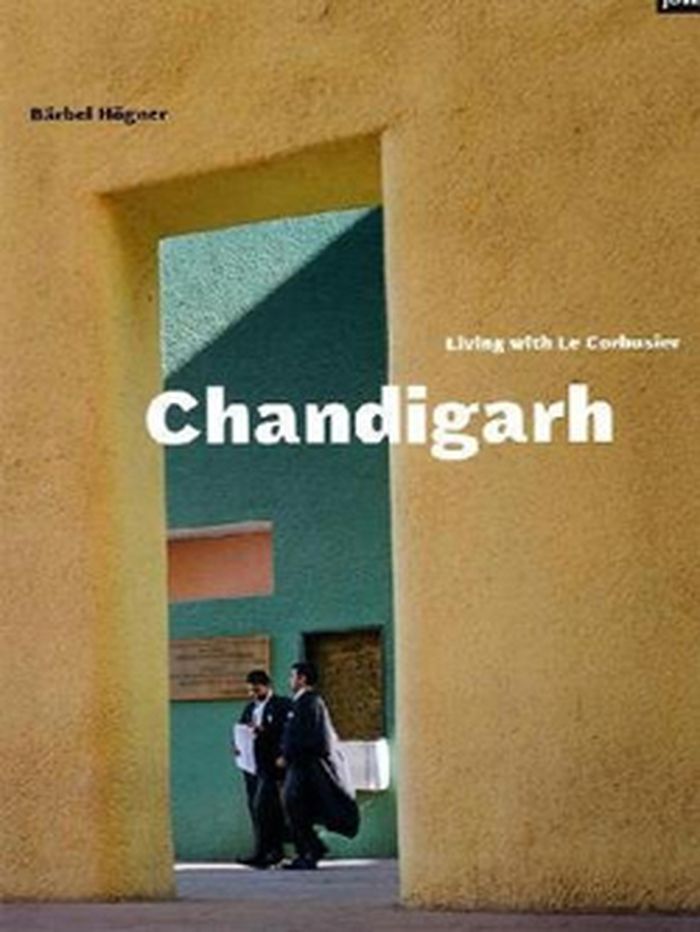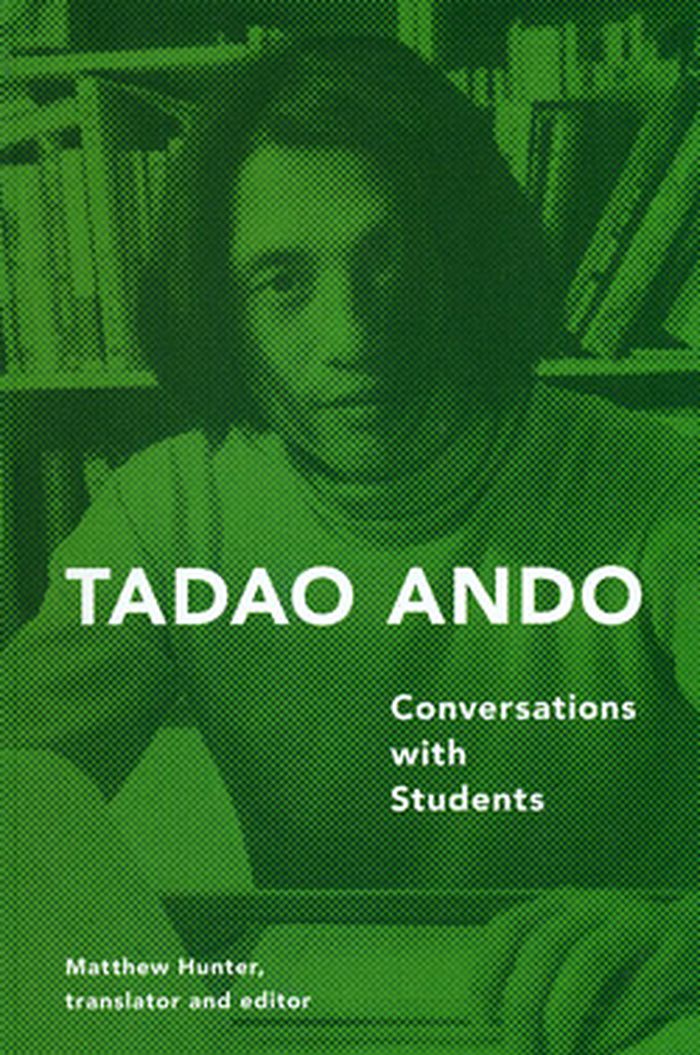$64.95
(disponible en magasin)
Résumé:
At a time when environmental awareness is becoming increasingly important, the post-disaster and DIY-oriented philosophy of Ishinomaki Laboratory reflects the changing paradigms in furniture design today. Ishinomaki Laboratory was born in the aftermath of the Great East Japan Earthquake in 2011. Initiated by the architect Keiji Ashizawa, it was originally thought as a(...)
Ishinomaki Laboratory: An experiment in DIY and design
Actions:
Prix:
$64.95
(disponible en magasin)
Résumé:
At a time when environmental awareness is becoming increasingly important, the post-disaster and DIY-oriented philosophy of Ishinomaki Laboratory reflects the changing paradigms in furniture design today. Ishinomaki Laboratory was born in the aftermath of the Great East Japan Earthquake in 2011. Initiated by the architect Keiji Ashizawa, it was originally thought as a community workshop intended to assist residents affected by the disaster rebuilding furniture from the materials at hand. Along with running DIY workshops, "shinomaki Laboratory also participated in restoring local shops and the relevance and appeal of these well-designed yet low-tech products quickly resonated with people around the world.
Design, monographies
livres
Description:
ix, 165 pages : illustrations ; 25 cm
[Berlin] ; [New York] : Springer, ©2008.
The territorial future of the city / Giovanni Maciocco, editor.
Actions:
Exemplaires:
Description:
ix, 165 pages : illustrations ; 25 cm
livres
[Berlin] ; [New York] : Springer, ©2008.
livres
Description:
271 pages : color illustrations ; 28 cm.
New York : Princeton Architectural Press, 2014.
Permanent change : plastics in architecture and engineering / Michael Bell and Craig Buckley, editors.
Actions:
Exemplaires:
Description:
271 pages : color illustrations ; 28 cm.
livres
New York : Princeton Architectural Press, 2014.
livres
Description:
xix, 246 pages : illustrations ; 27 cm
Minneapolis : University of Minnesota Press, ©2006.
Bauhaus culture : from Weimar to the Cold War / Kathleen James-Chakraborty, editor.
Actions:
Exemplaires:
Description:
xix, 246 pages : illustrations ; 27 cm
livres
Minneapolis : University of Minnesota Press, ©2006.
$63.95
(disponible sur commande)
Résumé:
An intimate glimpse into the professional and romantic relationship between Harriet Pattison and the renowned architect Louis Kahn. On a winter day in 1953, a mysterious man in a sheepskin coat stood out to Harriet Pattison, then a theater student at Yale. She would later learn he was the architect Louis Kahn (1901–1974). This chance encounter served as preamble to a(...)
Our days are like full years: letters from Louis Kahn
Actions:
Prix:
$63.95
(disponible sur commande)
Résumé:
An intimate glimpse into the professional and romantic relationship between Harriet Pattison and the renowned architect Louis Kahn. On a winter day in 1953, a mysterious man in a sheepskin coat stood out to Harriet Pattison, then a theater student at Yale. She would later learn he was the architect Louis Kahn (1901–1974). This chance encounter served as preamble to a fifteen-year romance, with Pattison becoming the architect’s closest confidante, his intellectual partner, and the mother of his only son.Married and twenty-seven years her senior, Kahn sent her scores of letters—many from far-flung places—until his untimely death. This book weaves together Pattison’s own story with letters, postcards, telegrams, drawings, and photographs that reveal Kahn’s inner life and his architectural thought process, including new insight into some of his greatest works, both built and unbuilt.
Architecture, monographies
Chronomanifestes 1950-2010
$35.95
(disponible en magasin)
Résumé:
This small volume accompanies the exhibition of the same name celebrating the 30th anniversary of the establishment of the Regional Funds for Contemporary Art at the FRAC Centre in Orléans. Conceived by architect Bernard Tschumi as a series of manifestoes on the city and the most radical post-war, contemporary architecture, it gathers together notable and lesser-known(...)
Chronomanifestes 1950-2010
Actions:
Prix:
$35.95
(disponible en magasin)
Résumé:
This small volume accompanies the exhibition of the same name celebrating the 30th anniversary of the establishment of the Regional Funds for Contemporary Art at the FRAC Centre in Orléans. Conceived by architect Bernard Tschumi as a series of manifestoes on the city and the most radical post-war, contemporary architecture, it gathers together notable and lesser-known artists and architects who at some point have made a proclamation – a vision of the city and of architecture – in an attempt to illustrate the process of this new and experimental discourse. In this way, the book narrates the logical assertion that architecture, before becoming forms, is about ideas.
Architecture expérimentale
$19.00
(disponible sur commande)
Résumé:
A collaboration between artist Sophie Warren, architect Jonathan Mosley and writer Robin Wilson, Beyond Utopia looks at the practicalities of utopian thinking in urban planning and administrative culture. Submitting a utopian architectural proposal for a real site in London to city officials, the trio enacted a form of playful provocation as a basis for exploring the(...)
Théorie de l’art
octobre 2011
Surface tension supplement no.5 : Beyond utopia
Actions:
Prix:
$19.00
(disponible sur commande)
Résumé:
A collaboration between artist Sophie Warren, architect Jonathan Mosley and writer Robin Wilson, Beyond Utopia looks at the practicalities of utopian thinking in urban planning and administrative culture. Submitting a utopian architectural proposal for a real site in London to city officials, the trio enacted a form of playful provocation as a basis for exploring the systems and languages of planning, architecture and city development. Though fictive, the utopian proposal gained credence as it was discussed and shared among planning officials and reviewers, ultimately becoming a springboard for dialogue about possibilities and even actualities in the sphere of public space. Centered on a screenplay for an unrealized film, which restages the process and exchanges of the original proposal, Surface Tension Supplement No. 5 also includes texts and projects by leading theorists, artists and academics who debate the roles of spatial practice and politics today.
Théorie de l’art
$85.00
(disponible sur commande)
Résumé:
In 1950, Indian prime minister Jawaharlal Nehru invited legendary French-Swiss architect Le Corbusier to embark on one of the greatest experiments in urban planning history: to build a new capital Chandigarh, a city whose monumental modernism promised to free India from the fetters of colonial tradition. 'six decades after its founding and on the eve of its becoming a(...)
Chandigarh revealed: Le Corbusier's city today
Actions:
Prix:
$85.00
(disponible sur commande)
Résumé:
In 1950, Indian prime minister Jawaharlal Nehru invited legendary French-Swiss architect Le Corbusier to embark on one of the greatest experiments in urban planning history: to build a new capital Chandigarh, a city whose monumental modernism promised to free India from the fetters of colonial tradition. 'six decades after its founding and on the eve of its becoming a UNESCO World Heritage Site in 2016, photographer and Chandigarh resident Shaun Fynn was granted unprecedented access to turn his lens on Le Corbusier's city and capture what is rarely seen: the living metropolis behind the master plan. Fynn's captivating images of the city and its inhabitants reveal how the poetry of the architect's compositions has been shaped by the tumult of everyday life. Alongside descriptions of the city's architectural highlights, Chandigarh Revealed features a foreword by Le Corbusier authority Maristella Casciato, an essay by architectural historian Vikram ditya Prak sh, an interview with M. N. Sharma one of two surviving members of Le Corbusier's team and custom-designed maps to orient readers.
Architecture, monographies
$50.00
(disponible sur commande)
Résumé:
In the early 1950s, many in the architectural profession turned their gaze towards India, where an ideal modern city seemed to be becoming a reality. When Le Corbusier and his team started work in February 1951 in Chandigarh, American planner Albert Mayer and his young principal architect Matthew Nowicki had already completed a land development plan for the site. The(...)
Chandigarh: Living with Le Corbusier
Actions:
Prix:
$50.00
(disponible sur commande)
Résumé:
In the early 1950s, many in the architectural profession turned their gaze towards India, where an ideal modern city seemed to be becoming a reality. When Le Corbusier and his team started work in February 1951 in Chandigarh, American planner Albert Mayer and his young principal architect Matthew Nowicki had already completed a land development plan for the site. The challenge Le Corbusier then faced was to demonstrate how a city designed from the drawing board could feel humane, functional and viable once built. Once the home of public officials, Chandigarh has become a vibrant garden city and a magnet for the booming Indian software industry. Attracted to the idea of a possible dialogue and contradiction between European architecture and Indian lifestyle, German ethnographer Bärbel Högner began photographing the city. Chandigarh: Living with Le Corbusier surveys Le Courbusier's contribution to India's first planned city, while simultaneously revealing Högner's passionate interest and impeccable eye for architectural detail.
Architecture, monographies
$22.95
(disponible sur commande)
Résumé:
The newest volume in the Conversations series features Japanese architect Tadao Ando. One of the most celebrated living architects, Ando is best known for crafting serenely austere structures that fuse Japanese building traditions with Western modernism. His minimalist masterworks, geometric forms clad in silky-smooth exposed concrete, are suffused with natural light and(...)
Tadao Ando : conversations with students
Actions:
Prix:
$22.95
(disponible sur commande)
Résumé:
The newest volume in the Conversations series features Japanese architect Tadao Ando. One of the most celebrated living architects, Ando is best known for crafting serenely austere structures that fuse Japanese building traditions with Western modernism. His minimalist masterworks, geometric forms clad in silky-smooth exposed concrete, are suffused with natural light and set in perfect harmony with the landscape. In these highlights from lectures delivered at the University of Tokyos Graduate School of Architecture, Ando candidly describes his experiences as a largely self-taught practitioner, tracing his development from an early interest in the traditional building craft of his native Japan through his political awakening in the turbulent 1960s to his current stature as one of the worlds foremost architects. In addition to exploring his aesthetic influences and working process, Ando offers students a road map not only for maintaining professional integrity, but also for becoming effective agents of change in the world
Architecture, monographies
